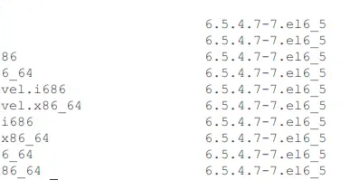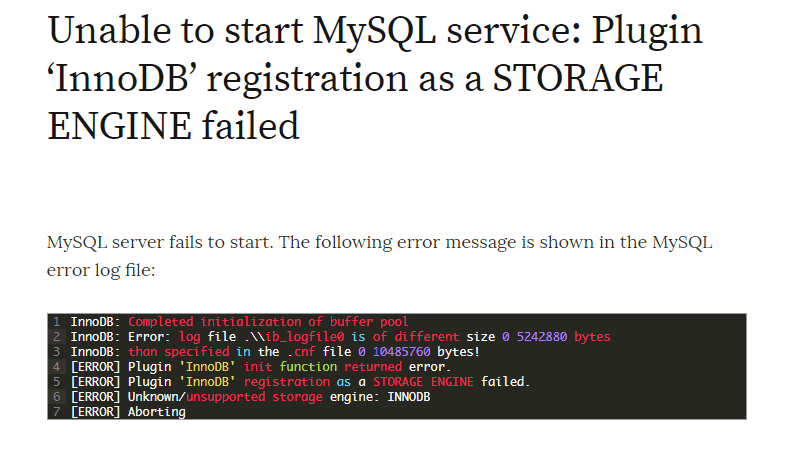Using a Different System?
-
How to Install Lychee 3.1 Photo Album on a CentOS 7 LAMP VPS
-
How to Install Lychee 3.1 Photo Album on a Fedora 26 LAMP VPS
-
How to Install Lychee 3.1 Photo Album on a FreeBSD 11 FAMP VPS
-
How to Install Lychee 3.1 Photo Album on an Ubuntu 16.04 LAMP VPS
Lychee 3.1 Photo Album is a simple and flexible, free and open source photo-management tool which runs on a VPS server. It installs in a matter of seconds, enabling you to upload, manage, and share photos quickly and securely. Lychee 3.1 features Dropbox import, (with a valid drop-ins app key). It can be expanded with new features via plug-ins which can, for instance, allow you to sync with any directory containing photos, upload photos via SSH, create RSS feeds out of your photos, add watermarks to your photos, plus many other advanced and useful features.
In this tutorial, we are going to install Lychee 3.1 on a Debian 9 LAMP VPS using Apache web server, PHP 7.1, and a MariaDB database.
Prerequisites
- A clean Vultr Debian 9 server instance with SSH access
Step 1: Add a Sudo User
We will start by adding a new sudo user.
First, log into your server as root:
ssh root@YOUR_VULTR_IP_ADDRESS
The sudo command isn’t installed by default in the Vultr Debain 9 server instance, so we will first install sudo:
apt-get -y install sudo
Now add a new user called user1 (or your preferred username):
adduser user1
When prompted, enter a secure and memorable password. You will also be prompted for your “Full Name” and some other details, but you can simply leave them blank by pressing Enter.
Now check the /etc/sudoers file to make sure that the sudoers group is enabled:
visudo
Look for a section like this:
%sudo ALL=(ALL:ALL) ALL
This line tells us that users who are members of the sudo group can use the sudo command to gain root privileges. It will be uncommented by default so you can simply exit the file.
Next we need to add user1 to the sudo group:
usermod -aG sudo user1
We can verify the user1 group membership and check that the usermod command worked with the groups command:
groups user1
Now use the su command to switch to the new sudo user user1 account:
su - user1
The command prompt will update to indicate that you are now logged into the user1 account. You can verify this with the whoami command:
whoami
Now restart the sshd service so that you can login via ssh with the new non-root sudo user account you have just created:
sudo systemctl restart sshd
Exit the user1 account:
exit
Exit the root account (which will disconnect your ssh session):
exit
You can now ssh into the server instance from your local host using the new non-root sudo user user1 account:
ssh user1@YOUR_VULTR_IP_ADDRESS
If you want to execute sudo without having to type a password every time, then open the /etc/sudoers file again, using visudo:
sudo visudo
Edit the section for the sudo group so that it looks like this:
%sudo ALL=(ALL) NOPASSWD: ALL
Please note: Disabling the password requirement for the sudo user is not a recommended practice, but it is included here as it can make server configuration much more convenient and less frustrating, especially during longer systems administration sessions. If you are concerned about the security implications, you can always revert the configuration change to the original after you finish your administration tasks.
Whenever you want to log into the root user account from within the sudo user account, you can use one of the following commands:
sudo -i
sudo su -
You can exit the root account and return back to your sudo user account any time by simply typing the following:
exit
Step 2: Update Debian 9 System
Before installing any packages on the Debian server instance, we will first update the system.
Make sure you are logged into the server using a non-root sudo user and run the following commands:
sudo apt-get update
sudo apt-get -y upgrade
Step 3: Install Apache Web Server
Install the Apache web server:
sudo apt-get -y install apache2
Then use the systemctl command to start and enable Apache to execute automatically at boot time:
sudo systemctl enable apache2
sudo systemctl start apache2
Check your Apache default site configuration file to ensure that the DocumentRoot directive points to the correct directory:
sudo vi /etc/apache2/sites-enabled/000-default.conf
The DocumentRoot configuration option will look like this:
DocumentRoot "/var/www/html"
We now need to enable the mod_rewrite Apache module, so ensure that your Apache deafult site configuration file is still open, and add the following Directory Apache directives just before the closing </VirtualHost> tag, so that the end of your configuration file looks like this:
<Directory /var/www/html/>
Options Indexes FollowSymLinks MultiViews
AllowOverride All
Order allow,deny
allow from all
</Directory>
</VirtualHost>
The most important directive shown above is AllowOverride All.
Now save and exit the file, and enable the mod_rewrite Apache module:
sudo a2enmod rewrite
We will restart Apache at the end of this tutorial, but restarting Apache regularly during installation and configuration is certainly a good habit, so let’s do it now:
sudo systemctl restart apache2
Step 4: Install and Configure PHP 7.0
We can now install PHP 7.0 along with all of the necessary PHP modules required by Lychee:
sudo apt-get -y install php php-gd php-mbstring php-common php-mysql php-imagick php-xml libapache2-mod-php php-curl php-tidy php-zip
Since we may need to use Lychee to upload and process large files, we will need to change some of the default PHP settings.
Open the php.ini configuration file:
sudo vi /etc/php/7.0/apache2/php.ini
Change the following PHP options to these values:
max_execution_time = 300
post_max_size = 100M
upload_max_size = 100M
upload_max_filesize = 50M
memory_limit = 256M
When you have finished, save and exit the file.
If you ever run into problems with not being able to upload or process large files with Lychee then simply try increasing the above values further, as that can solve your problems.
Step 5: Install MariaDB (MySQL) Server
Debian 9 defaults to using MariaDB database server, which is an enhanced, fully open source, community developed, drop-in replacement for MySQL server.
Install MariaDB database server:
sudo apt-get -y install mariadb-server
Start and enable MariaDB server to execute automatically at boot time:
sudo systemctl enable mariadb
sudo systemctl start mariadb
Secure your MariaDB server installation:
sudo mysql_secure_installation
The root password will be blank, so simply hit enter when prompted for the root password.
When prompted to create a MariaDB/MySQL root user, select “Y” (for yes) and then enter a secure root password. Simply answer “Y” to all of the other yes/no questions as the default suggestions are the most secure options.
Step 6: Create Database for Lychee
Log into the MariaDB shell as the MariaDB root user by running the following command:
sudo mariadb -u root -p
To access the MariaDB command prompt, simply enter the MariaDB root password when prompted.
Run the following queries to create a MariaDB database and database user for Lychee:
CREATE DATABASE lychee_db CHARACTER SET utf8 COLLATE utf8_general_ci;
CREATE USER 'lychee_user'@'localhost' IDENTIFIED BY 'UltraSecurePassword';
GRANT ALL PRIVILEGES ON lychee_db.* TO 'lychee_user'@'localhost';
FLUSH PRIVILEGES;
EXIT;
You can replace the database name lychee_db and username lychee_user with something more to your liking, if you prefer. Also, make sure that you replace “UltraSecurePassword” with an actually secure password.
Step 7: Install Lychee Files
Change your current working directory to the default web directory:
cd /var/www/html/
If you get an error message saying something like 'No such file or directory' then try the following command:
cd /var/www/ ; sudo mkdir html ; cd html
Your current working directory will now be: /var/www/html/. You can check this with the pwd (print working directory) command:
pwd
Now use wget to download the Lychee installation package:
sudo wget --content-disposition https://github.com/electerious/Lychee/archive/v3.1.6.zip
Please note: You should definitely check for the most recent version by visiting the Lychee download page.
List the current directory to check that you have successfully downloaded the file:
ls -la
Remove index.html:
sudo rm index.html
Let’s quickly install unzip so we can unzip the file:
sudo apt-get -y install unzip
Now uncompress the zip archive:
sudo unzip Lychee-3.1.6.zip
Move all of the installation files to the web root directory:
sudo mv -v Lychee-3.1.6/* Lychee-3.1.6/.* /var/www/html 2>/dev/null
Change ownership of the web files to avoid any permissions problems:
sudo chown -R www-data:www-data * ./
Set world readable permissions on the uploads and data directories:
sudo chmod -R 777 data/ uploads/
Restart Apache again:
sudo systemctl restart apache2
Now we’re ready to move onto the final step.
Step 8: Complete Lychee Installation
It’s now time to visit the IP address of your server instance in your browser, or if you’ve already configured your Vultr DNS settings (and given it enough time to propagate) you can simply visit your domain instead.
To access the Lychee installation page, enter your Vultr instance IP address into your browser address bar:
http://YOUR_VULTR_IP_ADDRESS/
-
On the
Database Connection Detailspage, enter the following database values:Database Host: localhost Database Username: lychee_user Password: UltraSecurePassword Database Name: lychee_dbClick
Connectto continue. -
Enter a
UsernameandPasswordfor your installation:Username: <your username> Password: <a secure password>Click
Create Loginto continue.
You will be automatically redirected to your album upload page and logged into the admin section. If you want to change the settings you can click on the gear icon in the top left corner of the page.
To change the more advanced settings, you will need to return to the terminal and edit the Lychee configuration file:
sudo vi data/config.php
If you haven’t yet configured your Vultr DNS settings, you can do so using the Vultr DNS control panel.
It’s also advisable to configure your site to use SSL as most modern browsers will give warnings when sites do not have SSL enabled and SSL certificates are now available for free.
In any case, you are now ready to start uploading and sharing your photos. Make sure you check out the Lychee docs for more information about how to configure and use your photo manager.
Want to contribute?
You could earn up to $300 by adding new articles
Suggest an update
Request an article





